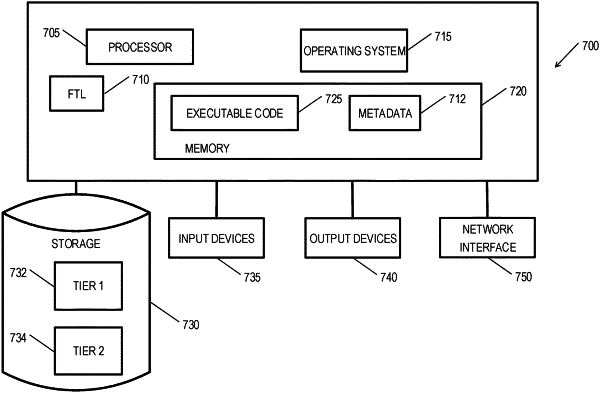| CPC G06F 3/0647 (2013.01) [G06F 3/0611 (2013.01); G06F 3/0652 (2013.01); G06F 3/0659 (2013.01); G06F 3/0688 (2013.01)] | 16 Claims |

|
1. A method for data placement in a storage system comprising a first tier and a second tier, the method comprising:
storing access statistics per object;
obtaining a request to perform a write operation;
calculating a recency factor related to timing and frequency of accessing an object to a first object based on the access statistics;
writing the first object to the first tier if the recency factor is above a threshold, and to the second tier otherwise; and
performing garbage collection process on the second tier by:
reading metadata of objects stored in the second tier;
for each of the objects stored in the second tier, determining whether the object stored in the second tier is valid or invalid based on the metadata;
discarding invalid objects; and
for each valid object:
calculating a recency factor related to timing and frequency of accessing an object for the valid object based on the access statistics of the valid object; and
moving the valid object to the first tier if the recency factor is above a threshold or leaving the valid object in the second tier otherwise,
wherein latency of the first tier is lower compared with latency of the second tier, and
wherein the recency factor is calculated by;
scanning entries in an access statistics list;
for each entry in the access statistics list
if a timestamp of the entry is older than a maximum recency value than discarding the entry;
else, calculating a recency element for the entry such that the recency element is higher as the access is more recent; and
summing the recency elements of the entries in the access statistics list.
|